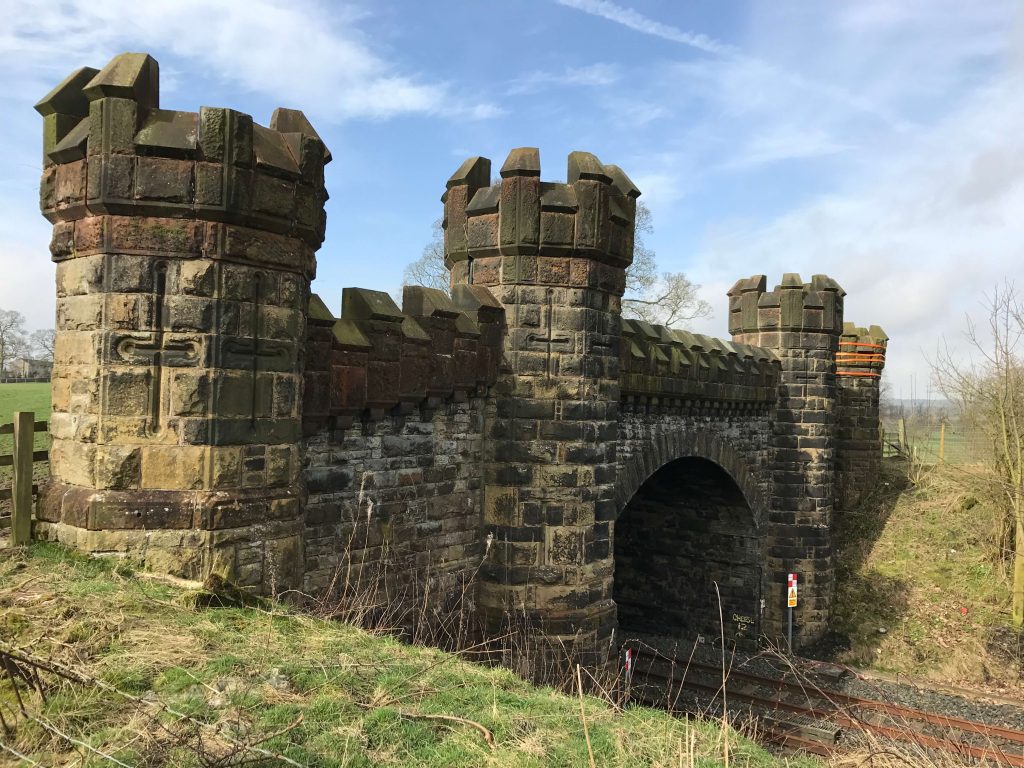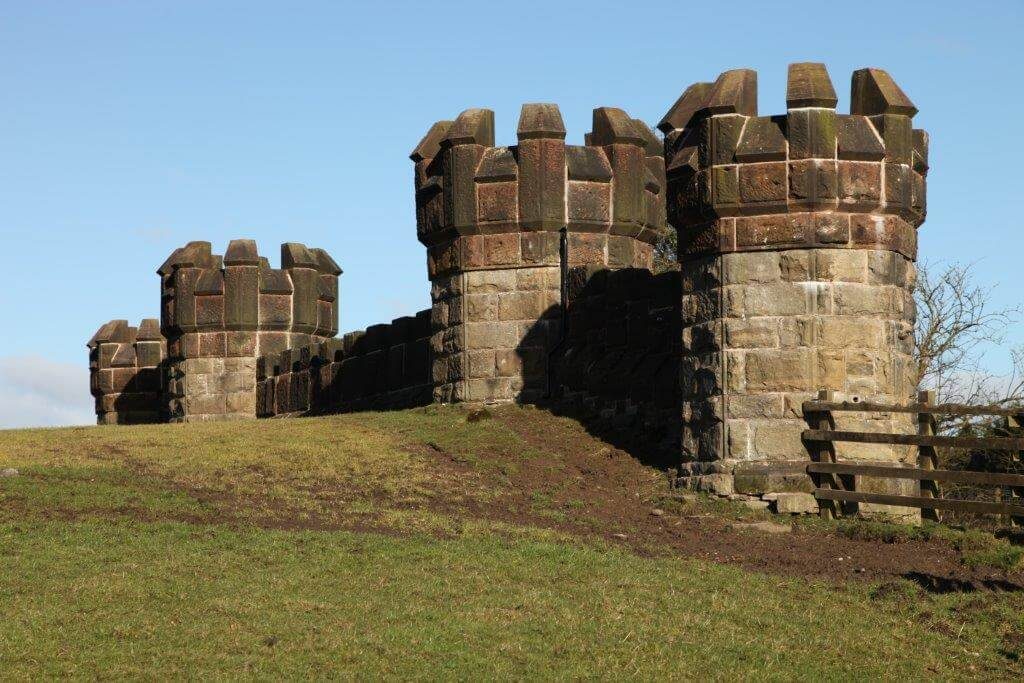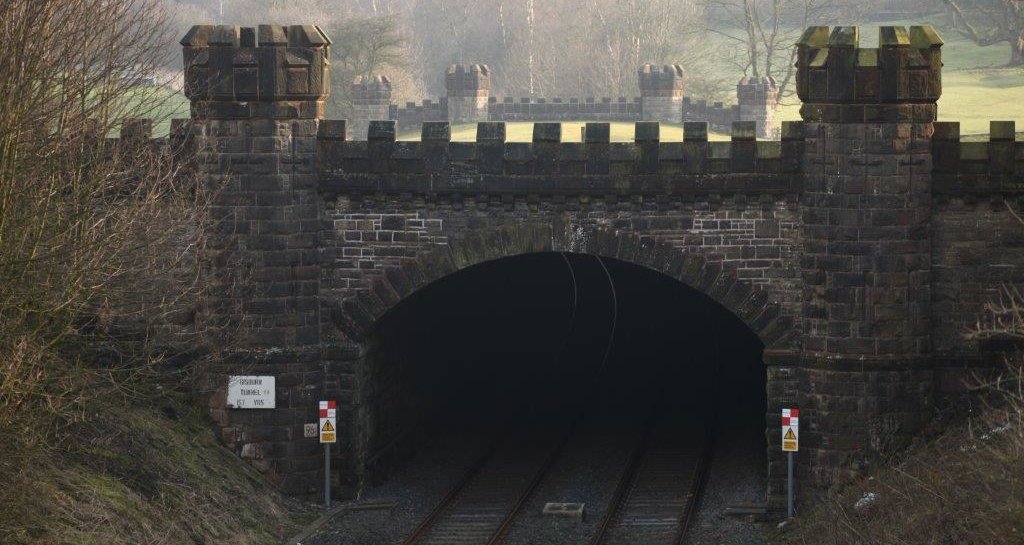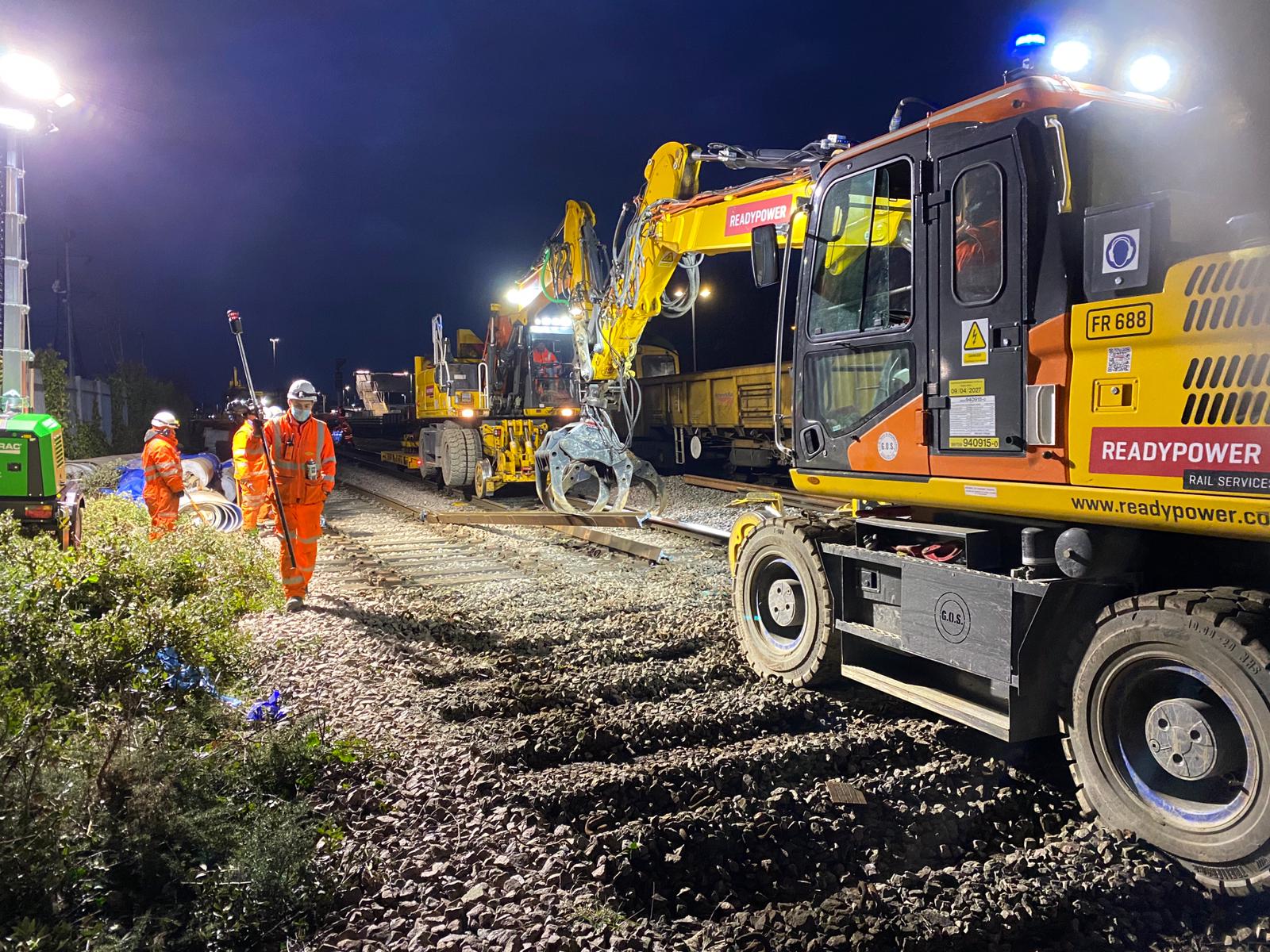In February 2018, we lovingly restored a listed Ribble Valley tunnel.
This example of our commitment to preserving Britain’s railway heritage came under the Great North Rail Project to transform travel and stimulate economic growth in the region.
The grade II listed Gisburn tunnel in the Ribble Valley area, Lancashire, is a castle-like structure that sits on an important route for freight trains.

It was built in 1876 through the Gisburn Park Estate – to prevent owner Lord Ribblesdale’s horses from being scared by train noise, and to preserve the view.
The result is an approximately 150-yard tunnel with octagonal turrets built in sandstone, which we carefully restored as part of an effort to preserve an economically important freight corridor. All while causing no disruption to trains.
Our team, led by Jack Ryder, scheme project manager at Network Rail, undertook the work following a safety concern over one of the turrets – a tree growing out of it had made it unstable.
The National Railway Heritage Awards recognised the project as a runner up in the Structures Restoration Award category last year, praising Network Rail for its detailed approach to the structure and commitment to railway heritage.

How did we do it?
The project involved two main considerations – that it’s vital to treat the restoration of any listed structure with special care and to ensure the repairs would last for another 150 years.
Our team removed all vegetation and improved waterproofing, adding more drainage as an extra precaution.
We then pointed existing stonework with lime mortar. To sensitively repair the tunnel, we removed each stone block before reusing it.
We also decided against using any replicas, so we didn’t replace any missing corbels – supports – with new additions. This enabled us to avoid a patchwork approach to the repair and create a finished look that was as good as in 1876.
Why is it important?
Sensitively restoring the Gisburn tunnel demonstrates best practice for the thousands of structures we look after across Britain. In fact, we own and operate 30,000 bridges, tunnels and viaducts.
Many of these date from the Victorian era; being responsible for this national heritage is a privilege and a challenge. Very old structures are vulnerable to extreme weather conditions and often need renewing. They may also need to be reconstructed; many bridges aren’t high enough to fit the overhead electrical equipment that’s required to power electric trains.
The National Railway Heritage Awards praised Network Rail’s repairs of the Gisburn tunnel as being wholehearted and for preserving interesting railway landmarks.
From the archive: Glasgow Queen Street
From the archive: London Charing Cross
Step back in time… and inside Britain’s busiest signal box
Network Rail graduates step into history
Preserving railway history: five things saved by Network Rail




